Hello everyone! Welcome to our Youth Island Blog. This time, we stepped out from our Island, Osakikamijima and visited the Mitarai district on our sister island, Osakishimojima.
The Mitarai district flourished as a port town for waiting on winds and tides during the Edo period. In 1994, it was designated by the government as an Important Preservation District for Groups of Traditional Buildings. This narrow area, crisscrossed with small alleys, features a mix of merchant houses, tea shops, shrines, temples, and inns. The townscape has remained since it was formed in the mid-17th century, showcasing its development as a relay port for transportation across the Seto Inland Sea through about 200 years of the Edo period and into the early Showa period.
Our first stop was the old Shibaya, a traditional Edo-period town house. It is said that the famous surveyor Inō Tadataka once stayed here, and inside, we found displays of the rare survey maps created by him, with only two copies known to exist in the country. These maps allow us to see Inō Tadataka as he measured the town of Mitarai and the surrounding islands. There was also a map of the areas around Japan from the 19th century, showing place names in old language, including names from China and Australia.

Next, we visited an art gallery called NAYA-KITANI. Here, we saw several paintings that detailed the landscapes found on Osakishimojima and the nearby islands, all beautifully capturing the Seto Inland Sea. We had the opportunity to talk to the artist, Mr. Tanaka, who also operates another gallery called Mitarai Gallery in the Mitarai district, where he exhibits his incredible works. Mr. Tanaka is also actively involved in revitalizing the Osakishimojima region. He collaborates with residents of Osakikamijima and Kure to organize an annual Art Walk across the surrounding islands. We highly recommend a visit to Mr. Tanaka’s gallery—his vibrant, outstanding works are not to be missed!
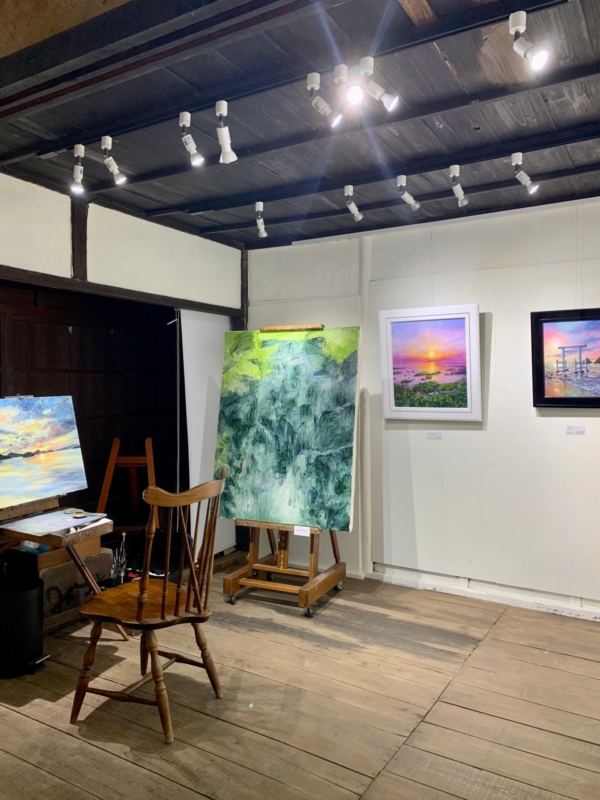
As we dove into Mitarai, a wave of nostalgia washed over us. Old-school Japanese cartoon characters popped up all around, sparking memories that felt both fuzzy and familiar. It was such a joy to reconnect with these childhood pals in this charming and traditional spot. The streets, with their old Edo-period buildings, felt like they were whispering stories from long ago. Inside the Toy Museum, surrounded by beautifully crafted wooden toys, we couldn’t help but smile as we relived those simpler, carefree moments.

Leaving the toy museum, we started hiking up to Rekishi-no-Mieruoka Park, the trail was lined with vibrant greenery, and the sounds of birds chirping added to the lively atmosphere. Each twist and turn gave me sneak peeks of the stunning Seto Inland Sea, with its sparkling waters catching the sunlight. The climb felt refreshing, with the cool mountain air filling my lungs. When I finally reached the park, I was blown away by the breathtaking views. Standing there, I could see the surrounding islands and the deep blue sea stretching out as far as the eye could see. It felt like I was on top of the world, soaking in the beauty of this incredible spot.
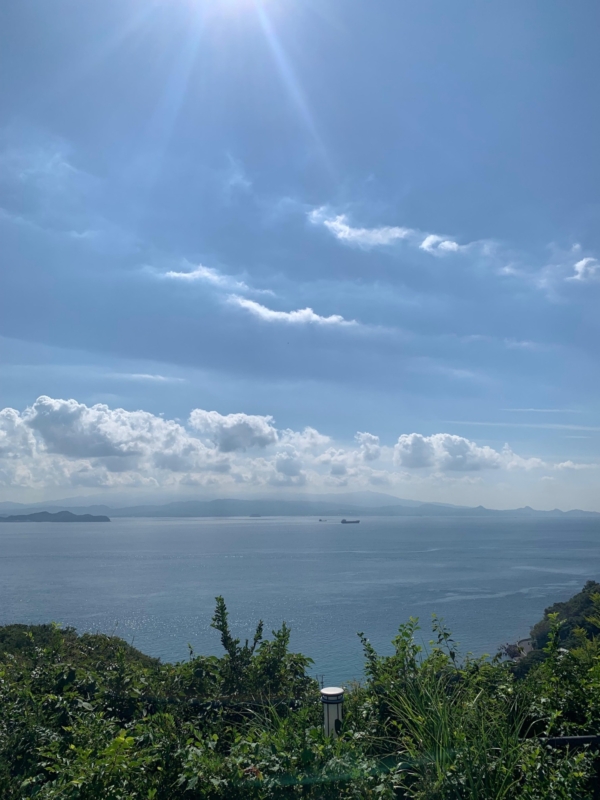
Osakishimojima is easily accessible from Osakikamijima as well as Seifukan. A 15-minute ferry ride from Akashi Port will take you to Ocho Port. Additionally, Osakishimojima is part of the Akinada Tobishima Kaido, a scenic cycling road connecting the islands. On clear days, we highly recommend visiting by bicycle to fully enjoy the beautiful surroundings.
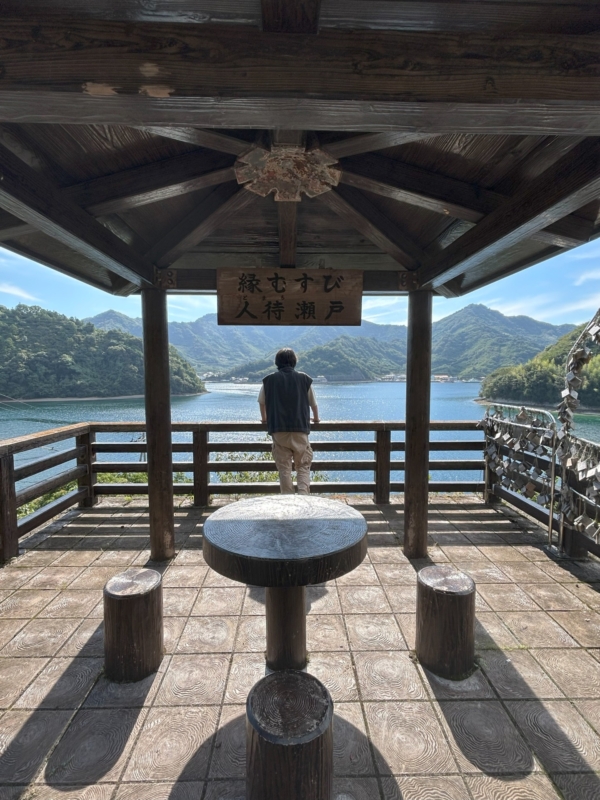
Mitarai Gallery / NAYA-KITANI (Instagram): SACHIO_TANAKA_340
Mr. Tanaka’s website: https://atelier340.com/
みなさん、こんにちは。青春島旅ブログへようこそ。今回は、私たちが住む大崎上島から一足踏み出し、姉妹島であるお隣の大崎下島の御手洗地区にお邪魔させていただきました。
御手洗地区は、江戸時代に風待ち、潮待ちの港街として栄え、平成6年には重要伝統的建造物群保存地区として国から制定されました。小路等が網の目のように巡っている狭い土地に商家、茶屋、神社や寺院、船宿などが混在するこの街並みは、17世紀の中頃に形成されて以来、江戸時代の約200年間を経て昭和初期に至るまで、瀬戸内海交通の中継港として、時代に応じた発展を示し、その痕跡を今に残しています。
私たちがまず訪れたのは、旧柴屋という、江戸時代の町屋の建物。
かつて伊能忠敬が泊まったとされている屋敷には、全国に2枚しかないといわれている伊能忠敬測量絵図が展示されており、御手洗の街や周辺の島々の計測を行った伊能忠敬の姿を感じることが出来ます。また、19世紀に書かれた日本周辺の地図も展示されており、中国やオーストラリアの地名が旧字で描かれていました。

続いて訪れたのは、NAYA-KITANIというアートギャラリーです。ここでは、大崎下島や近隣の島々で見られる景色を詳細に表現した絵画が何点も展示されており、手書きで描かれた瀬戸内海を楽しむことが出来ます。
なんと、この絵を描かれた田中さんに話をさせていただきました。田中さんは、御手洗の街に「みたらいギャラリー」というもうひとつのギャラリーも営業されており、そちらでもご自身の描かれた作品を展示しているそうです。また、大崎下島の地域おこしにも積極的に参加されており、大崎上島や呉に住む人たちと協力し、毎年周辺の島々でアートウォークを開催されています。
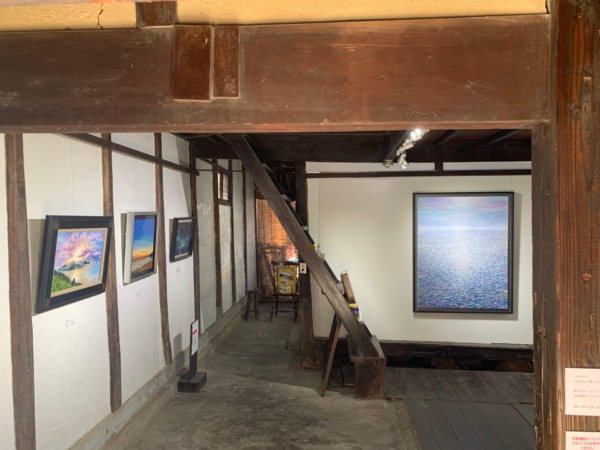
NAYA-KITANIを出て、次に向かったのは、駄菓子屋玩具ミュージアム。中に入ると、一気に昭和の雰囲気に囲まれます。1950年台の高度経済成長期の子供達を元気付けたアニメや漫画、玩具が部屋中に飾られており、当時の子供達の生活がどのようなものだったのか、鮮明に伝わってきます。
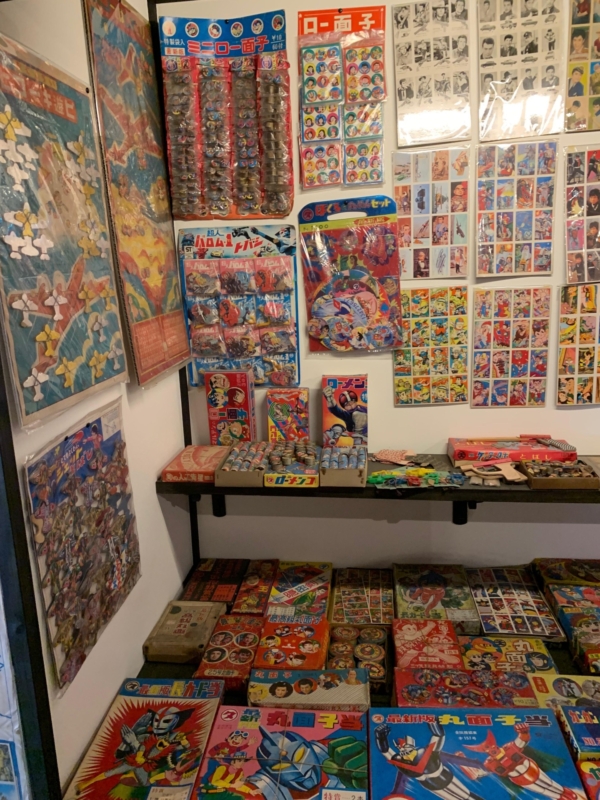
中庭に入ると、昭和の玩具で実際に遊ぶことができ、ベーゴマやメンコを手に取り、楽しいひと時を過ごすことが出来ます。
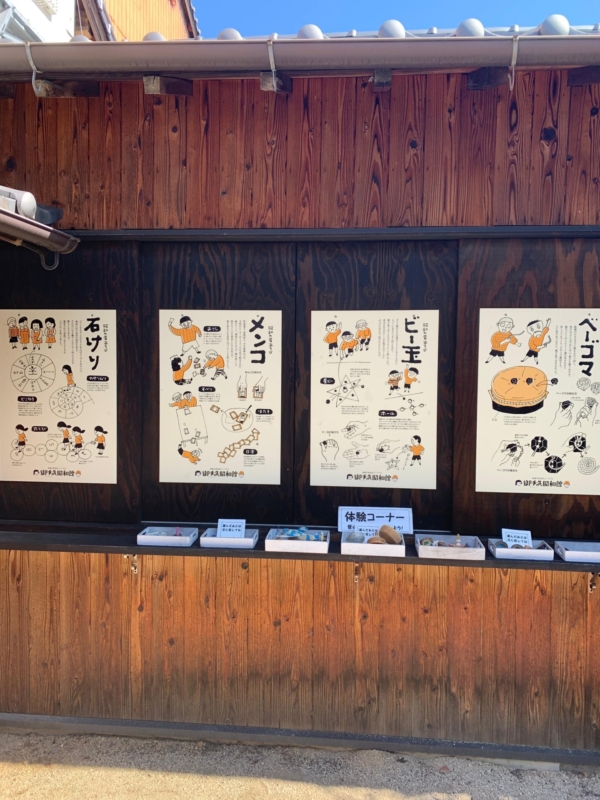
駄菓子屋玩具ミュージアムから15分ほど徒歩で登山をすると、今度は歴史の見える丘公園に着きます。遊歩道には鮮やかな緑が生い茂り、鳥のさえずりが多く聞こえてきます。曲がり角を曲がるたびに、陽光を受けてきらめく瀬戸内海の絶景を垣間見ることができ、爽快な登りを体験することが出来ます。頂上につくと、そこには息をのむような景色が待っています。東西南北に広がる周囲の島々や、紺碧の安芸灘を見ることができ、瀬戸内海を見渡すことが出来ます。

大崎下島は、大崎上島、また清風館からのアクセスも簡単で、明石港から15分のフェリーで、大長港に着きます。また、大崎下島は安芸灘とびしま海道という、島々を結ぶサイクリングロードも通っており、天気の良い日には自転車で訪れることをお勧めします。皆さんも、空が青く澄んだ秋の日に、大崎下島で楽しいひと時を過ごしてはいかがでしょうか。
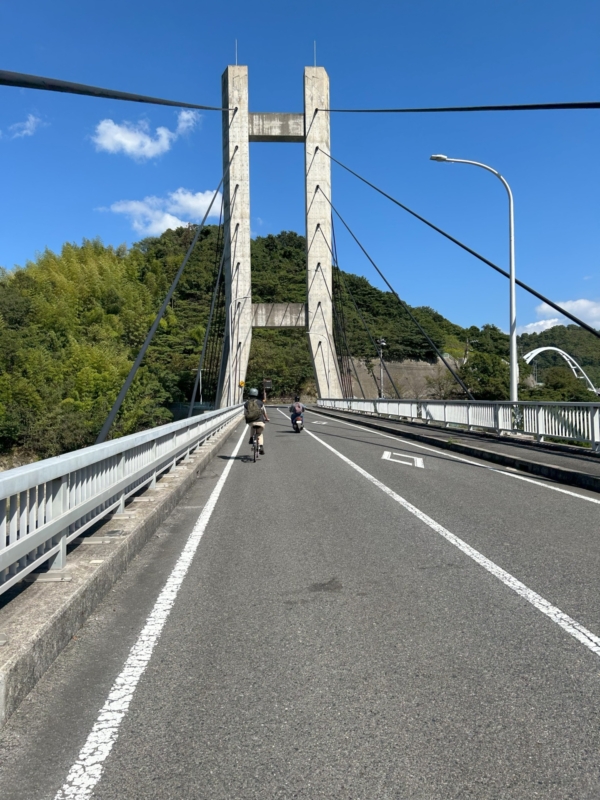
みたらいギャラリー・NAYA-KITANI (Instagram): SACHIO_TANAKA_340
田中さんのホームページはこちら: https://atelier340.com/


